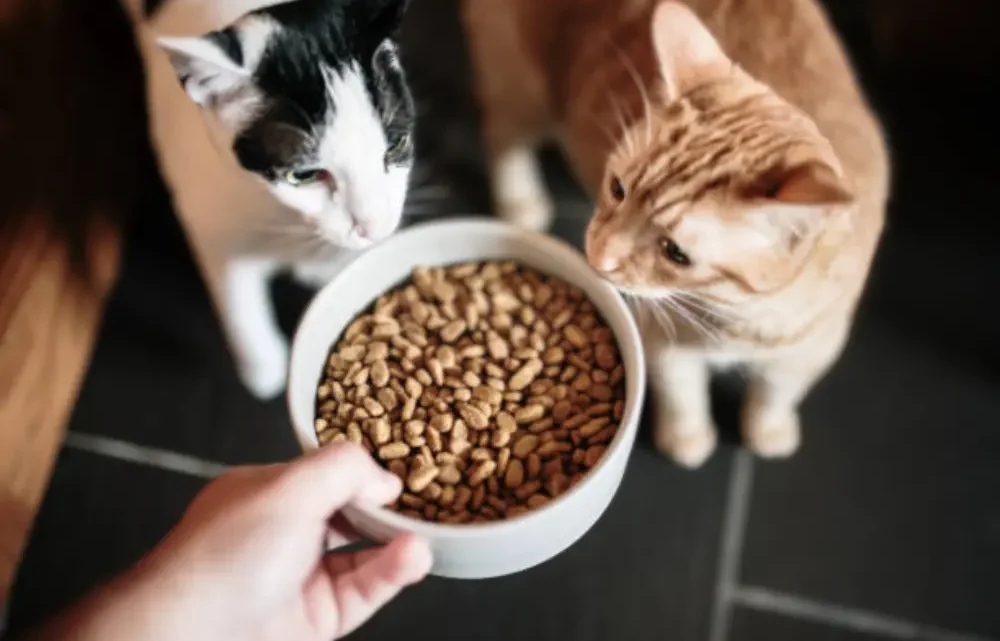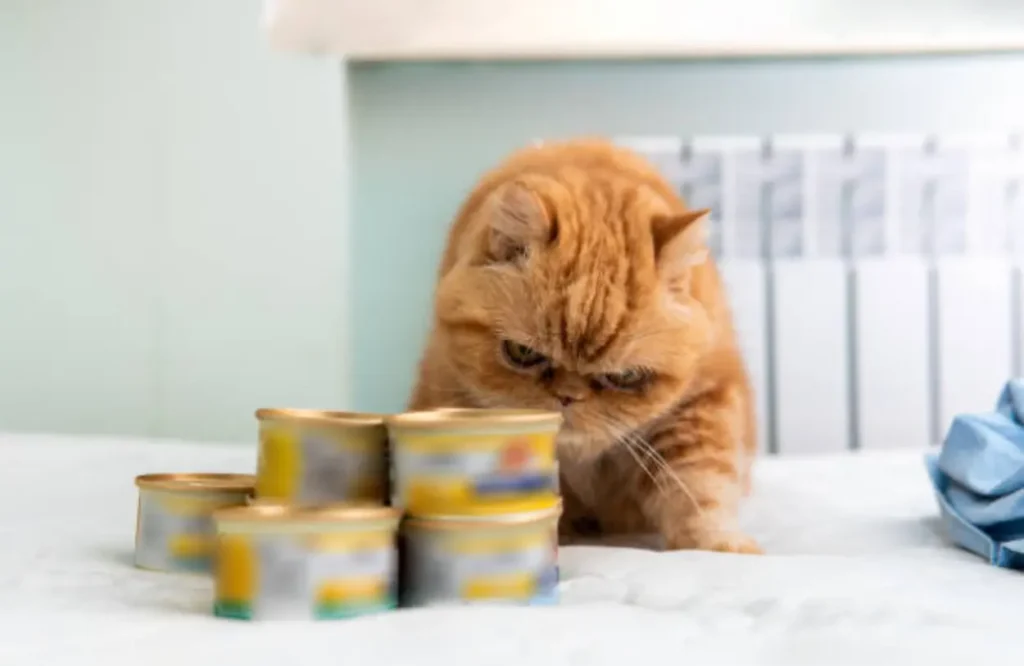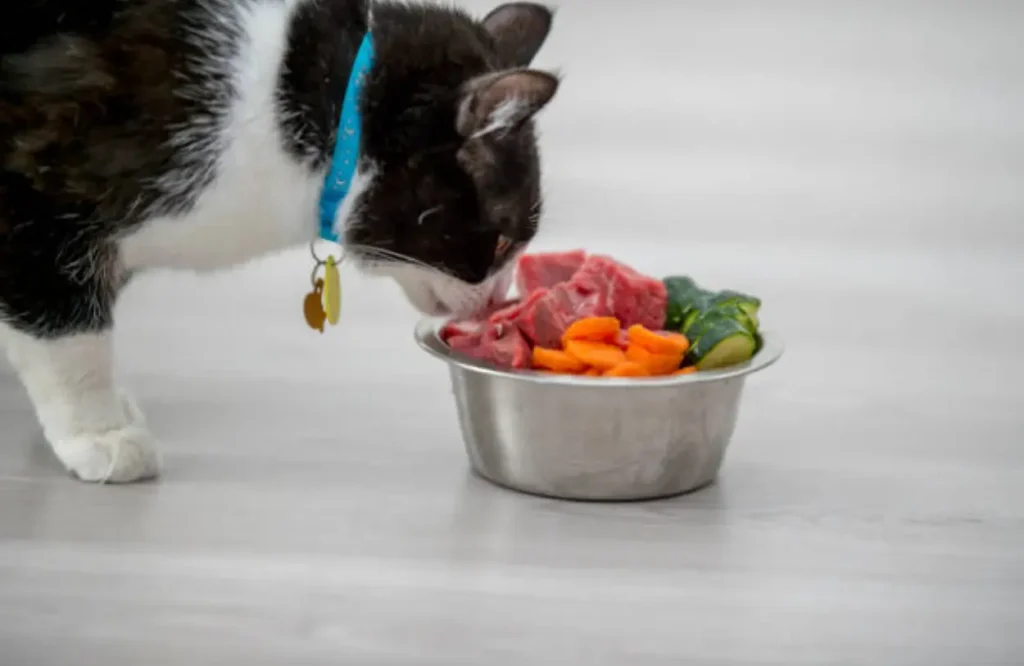
Is It Ok for My Cat to Only Eat Dry Food? Health Risks and Expert Advice
Is Dry Food Enough for My Cat’s Health?
So, you’re wondering, “My cat only eats dry food, is that ok?” You’re not alone. Many cat owners ask this question, and it’s a good one. While dry food is convenient and widely available, feeding your cat only dry food might not be as simple as it seems. There are a few key concerns to consider when it comes to your cat’s health—nutrition, hydration, and potential health risks.
Let’s dig into these areas so you can make an informed decision about your furry friend’s diet. We’ll look at whether dry food provides everything your cat needs, how it impacts their hydration, and if there are any hidden health issues lurking.
Nutritional Value of Dry Food: Is It Complete for Cats?
Dry food can meet your cat’s nutritional needs, but not all dry food is created equal. The key is choosing the right product.
Here’s what dry food should provide:
- Proteins: Essential for muscle growth and repair. High-quality animal proteins (chicken, turkey) are best.
- Fats: These give your cat energy and support skin and coat health. Omega-3 and omega-6 fatty acids are important.
- Carbs: Cats don’t need many carbs. Too much can be a problem, as they’re obligate carnivores.
- Vitamins & Minerals: Taurine (important for heart health), vitamin A (supports vision), calcium, and magnesium are all necessary.
Is dry food enough? If you pick a high-quality brand, yes. Just make sure the food meets AAFCO standards, which guarantee it’s nutritionally complete.
Quick Tip: Avoid food packed with fillers like corn and wheat. Look for real animal-based ingredients instead.
What Are the Health Risks of Feeding My Cat Only Dry Food?
Feeding your cat only dry food may seem like a simple choice, but it can lead to several health issues. While dry food has its benefits, it can contribute to obesity, urinary tract problems, kidney disease, and even dental issues. Here’s a closer look at the risks:
1. Obesity in Cats
Dry food tends to be more calorie-dense than wet food, and many cats have a hard time regulating their food intake. Without the moisture content of wet food, cats may not feel as full and could end up overeating, leading to obesity. Excess weight puts a strain on your cat’s joints and increases the risk of diabetes.
2. Urinary Tract Problems
Dehydration is one of the biggest issues with dry food. Cats on a dry-food-only diet often don’t drink enough water. Over time, this can contribute to urinary tract infections, bladder stones, and crystals. Wet food, with its high moisture content, can help reduce the risk of these conditions by encouraging better hydration.
3. Kidney Disease in Cats
Chronic dehydration, a common issue for cats that only eat dry food, can damage the kidneys. Cats are naturally less inclined to drink water, so dry food exacerbates the issue. Over time, this can lead to kidney disease, which is especially concerning for older cats. Research from VCA Animal Hospitals highlights the importance of moisture in preventing kidney issues.
4. Dental Problems
While dry food can help with plaque control, it’s not a perfect solution. In reality, dry kibble doesn’t clean your cat’s teeth as well as you might think. Tartar buildup and gum disease are still common in cats that eat only dry food. This can lead to painful dental issues and affect your cat’s overall health.
5. Digestive Issues
A diet that’s too high in carbohydrates (which is often the case with many dry foods) can cause digestive issues like constipation or diarrhea. Cats thrive on a protein-rich diet with minimal carbs, and many dry foods don’t align with this need.
Quick Tips:
- If your cat is showing signs of obesity or urinary problems, consider introducing more wet food to their diet.
- Hydration is key—adding wet food can significantly improve kidney and urinary health.
- Regular dental checkups and using toothpaste designed for cats can help prevent dental issues, even with dry food.
Is It Better to Mix Wet and Dry Food for My Cat, and What Are the Benefits?
Combining wet and dry food for your cat isn’t just a trend; it’s a strategy backed by the need for both hydration and nutrition. Let’s break down the pros and cons of mixing wet and dry food, focusing on what’s most important for your cat’s health.
Benefits:
- Hydration: Cats on a dry-only diet are more likely to suffer from dehydration. According to studies from PetMD and VCA Animal Hospitals, cats are obligate carnivores and don’t feel thirsty enough to drink enough water. Wet food, which contains around 70-80% moisture, helps support kidney function and prevents urinary tract problems.
- Better Nutritional Balance: Wet food tends to have a higher protein content, which is essential for muscle and organ health. Brands like Hill’s Science Diet and Royal Canin are often praised for the quality of ingredients in their wet formulas. Combining wet with dry ensures your cat gets enough moisture, but also offers them the benefit of fats and fiber typically found in dry food.
- Taste Appeal: Many cats find wet food more appealing due to its texture and aroma. This can help with picky eaters or cats who are reluctant to finish their meals, ensuring they get proper nutrition.
Drawbacks:
- Cost: Wet food is more expensive per meal than dry food. PetMD estimates that wet food can cost up to twice as much as dry food over time.
- Storage: Wet food needs refrigeration after being opened, and it has a shorter shelf life than dry food, which can be inconvenient for some pet owners.
- Potential Weight Gain: Since wet food tends to have fewer calories per gram than dry food, if not portioned correctly, it may lead to overfeeding. Cats on a mixed diet should have their portions adjusted accordingly.
What Is Pate Cat Food? Why Your Cat Loves It!
How to Transition My Cat from Dry to Wet Food

Changing your cat’s diet from dry food to wet food doesn’t have to be stressful for either of you. Here’s how you can approach it:
Monitor for Issues: Keep an eye on their behavior, weight, and stool. Transitioning from dry to wet food can sometimes cause digestive issues like loose stool. If this happens, consider reducing the amount of wet food for a few days and gradually increasing it again.
Gradual Introduction: Experts like Dr. Jennifer Coates (Veterinary Advisor for PetMD) recommend starting with a 75:25 dry-to-wet ratio, then gradually increasing the wet food over 7-10 days. This will allow your cat’s digestive system to adjust and avoid gastrointestinal upset.
Temperature Matters: Cats are often more receptive to wet food when it’s warmed up slightly. This increases the aroma and makes it more enticing. Veterinary research from VCA Animal Hospitals shows that heat can enhance the palatability of wet food for cats.
Consistency and Patience: Cats can be finicky. Stick to a consistent feeding schedule, and make sure to offer both dry and wet food at the same time. Don’t rush the process—let your cat adapt at their own pace.
Read:
Friskies Lil’ Soups Review: The Purr-fect Cat Food Topper?
Purina Cat Chow vs Purina One: Making an Informed Choice
What’s the Best Diet Plan for My Cat’s Health, According to Veterinarians?
When it comes to your cat’s health, veterinarians stress the importance of a balanced diet. A good cat diet plan focuses on the right balance of protein, fat, moisture, and micronutrients. Here’s a breakdown of what experts suggest.
1. Focus on High-Quality Animal Protein
Dr. Jennifer Coates, a veterinarian and PetMD expert, emphasizes that cats are obligate carnivores, meaning they need high-quality animal protein to thrive. Look for food with real meat (chicken, turkey, fish) listed as the first ingredient. Proteins support everything from muscle development to immune function.
2. Don’t Overlook Fat
Fats are crucial, not just for energy but also for skin and coat health. Omega-3 and omega-6 fatty acids support joint and brain function, too. But keep an eye on the fat percentage—too much can lead to obesity.
3. Moisture is Key
Hydration is often overlooked, especially with dry food. Dr. Lisa Freeman, a veterinary nutritionist, points out that cats often don’t drink enough water, so wet food can be beneficial. It adds moisture, which supports kidney function and reduces the risk of urinary tract problems.
4. Balanced Micronutrients

Micronutrients like taurine (for heart health), vitamins A and E (for vision and immune health), and minerals like calcium and phosphorus are all essential. Top brands, like Hill’s Science Diet and Royal Canin, design their formulas to ensure these nutrients are balanced.
5. Age-Specific Diets
Kittens, adults, and seniors all have different nutritional needs. For example, kittens need more protein and fat for growth, while seniors may benefit from a diet lower in calories and higher in joint-supporting nutrients. Tailor your cat’s food to their life stage.
6. Consider Health Conditions
If your cat has health issues (e.g., obesity, kidney disease, or allergies), talk to your vet about a specialized diet plan. There are foods designed for specific conditions—weight management formulas or kidney support diets.
Quick Tips from Experts:
- Avoid fillers like corn or wheat—look for real animal protein as the first ingredient.
- Always check for AAFCO certification to ensure the food meets nutritional standards.
- A mix of wet and dry food can provide both hydration and nutrition.
- Adjust portion sizes based on your cat’s age, activity level, and health condition.
Conclusion: Based on Expert Recommendations, Should My Cat Eat Only Dry Food?
So, is it okay if my cat only eats dry food? The short answer is: it depends. Dry food can provide the necessary nutrition, but it comes with health risks and limitations.
From a nutritional standpoint, high-quality dry food can meet your cat’s basic needs, offering protein, fats, and essential nutrients. However, hydration is a critical concern. Cats are naturally low drinkers, and dry food lacks the moisture that wet food provides, which can lead to dehydration, urinary issues, and kidney problems in the long run.
Obesity, dental issues, and urinary tract infections are also common risks associated with feeding dry food exclusively. If your cat is eating only dry food, it’s crucial to monitor their health closely. Adding wet food or incorporating a mixed diet might help mitigate these risks, offering both hydration and nutritional balance.
To Sum Up:
- Dry food can be convenient and nutritionally adequate, but it’s not the perfect solution for every cat.
- Mixing wet and dry food offers hydration, better nutrition, and variety.
- If you stick to dry food, make sure it’s high-quality and always check for AAFCO certification.
- For long-term health, consider adjusting your cat’s diet based on their age, health needs, and any advice from your vet.
📚 Sources
- PetMD – Importance of hydration in cats and the risks of dehydration from dry food
👉 https://www.petmd.com/cat - VCA Animal Hospitals – Nutritional needs and benefits of wet and dry food for cats
👉 https://vcahospitals.com - Royal Canin – Feline nutrition and the role of wet vs dry food in cat diets
👉 https://www.royalcanin.com - Hill’s Science Diet – The nutritional benefits of mixed wet and dry cat food diets
👉 https://www.hillspet.com - Journal of Veterinary Internal Medicine – Studies on kidney disease in cats and the role of hydration
👉 https://www.journals.elsevier.com/journal-of-veterinary-internal-medicine - Vets Now – Obesity and dental problems in cats and the impact of dry food
👉 https://www.vets-now.com - American Association of Feed Control Officials (AAFCO) – Guidelines for cat food nutrition standards
👉 https://www.aafco.org
These sources were used to gather authentic data on cat food nutrition, hydration needs, and the potential risks associated with feeding cats only dry food.


